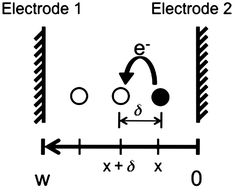On the electrical conductivity of microbial nanowires and biofilms†
Abstract
Dissimilatory metal-reducing bacteria (DMRB), such as Geobacter and Shewanella spp., occupy a distinct metabolic niche in which they acquire energy by coupling

* Corresponding authors
a Center for Bio/Molecular Science and Engineering, Naval Research Laboratory, 4555 Overlook Ave., SW, Washington, DC, USA
b National Research Council, 500 Fifth Street, NW, Washington, DC, USA
c Center for Bioelectronics, Biosensors and Biochips (C3B), Advanced Materials Research Center, Clemson University, 100 Technology Drive, Anderson, USA
Dissimilatory metal-reducing bacteria (DMRB), such as Geobacter and Shewanella spp., occupy a distinct metabolic niche in which they acquire energy by coupling

 Please wait while we load your content...
Something went wrong. Try again?
Please wait while we load your content...
Something went wrong. Try again?
S. M. Strycharz-Glaven, R. M. Snider, A. Guiseppi-Elie and L. M. Tender, Energy Environ. Sci., 2011, 4, 4366 DOI: 10.1039/C1EE01753E
To request permission to reproduce material from this article, please go to the Copyright Clearance Center request page.
If you are an author contributing to an RSC publication, you do not need to request permission provided correct acknowledgement is given.
If you are the author of this article, you do not need to request permission to reproduce figures and diagrams provided correct acknowledgement is given. If you want to reproduce the whole article in a third-party publication (excluding your thesis/dissertation for which permission is not required) please go to the Copyright Clearance Center request page.
Read more about how to correctly acknowledge RSC content.
 Fetching data from CrossRef.
Fetching data from CrossRef.
This may take some time to load.
Loading related content
